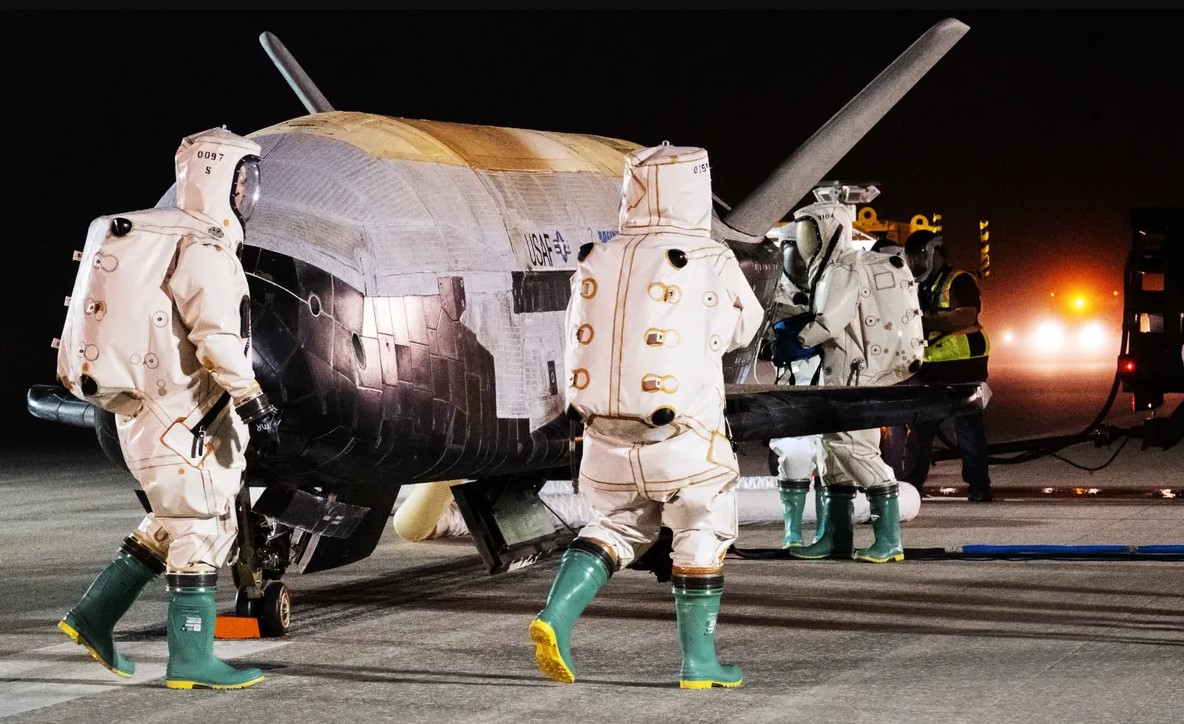The semi-secret X-37B spacecraft set a record for staying in orbit for the longest period of time for a vehicle of this kind in July of this year. Now that it has returned, sonic booms were heard all over Florida as it touched down.
The X-37B resembles a battered Space Shuttle from the past. Nevertheless, it can weigh almost a hundred times less and survive in orbit for a lot longer without a crew or the requirement for the supplies that keep them alive.
According to a statement from Boeing, Jim Chilton, “Since the X-37B’s maiden launch in 2010, it has broken records and given our country an unmatched capability to quickly test and integrate new space technologies.”
The Photovoltaic Radiofrequency Antenna Module of the Naval Research Laboratory converted sunshine into electricity throughout the mission to transmit microwaves to the ground. This concept, which was heavily debated in the 1980s, is currently enjoying a comeback as the price of solar energy and space launches continue to drop, bringing it closer to cost parity.
For the first time, the X-37B carried a service module attached to its back to boost its utility on this, its sixth mission. The module had to detach in order for it to re-enter the atmosphere safely, but this was probably a dig at China’s out-of-control Long March boosters, according to Air Force Secretary Frank Kendall: “The deliberate way in which we conduct on-orbit operations, including the service module disposal, speaks to the United States’ commitment to safe and responsible space practices, particularly as the problem of growing orbital debris threatens to impact international space operations.”

The X-37B is believed to be a spy plane or weapon since many of the experiments it transports involve the military, such as the FalconSat-8 developed in cooperation with the Air Force Research Laboratory. If so, it is extremely covert; analysts contend that it is too simple to track and awkward upon re-entry for either purpose.
The mission’s public components included a long-term study on how seeds’ viability is impacted by time spent in orbit and testing of radiation-shielding thermal coating materials for NASA.
With the completion of this mission, the X-37B will have spent 3,774 days in space and traveled more than 2.1 billion kilometers (1.3 billion miles).
Lt. Col. Joseph Fritschen of the Air Force stated in a statement that “the X-37B continues to push the boundaries of exploration, supported by an outstanding government and business team behind the scenes.” The scientific community and the Department of the Air Force have found value in the capacity to conduct experiments while in orbit and return them safely to Earth for in-depth examination. We could host more tests than ever before thanks to the service module on OTV-6.
However, it’s possible that the pilots of the aircraft didn’t make many friends in central Florida. The Kennedy Space Center’s neighbors are certainly used to loud noises, but most people don’t enjoy waking up on a Saturday to a sonic boom just before the rocket’s 5:22 am touchdown. Residents 50 kilometers (30 miles) west of Kennedy are quoted by The Tampa Bay Times as stating that their “whole house shook” and that there was a “sulfur-smelling fog” after the plane passed. Residents received no notice because of the project’s partial secrecy.
 Tech Gadget Central Latest Tech News and Reviews
Tech Gadget Central Latest Tech News and Reviews




